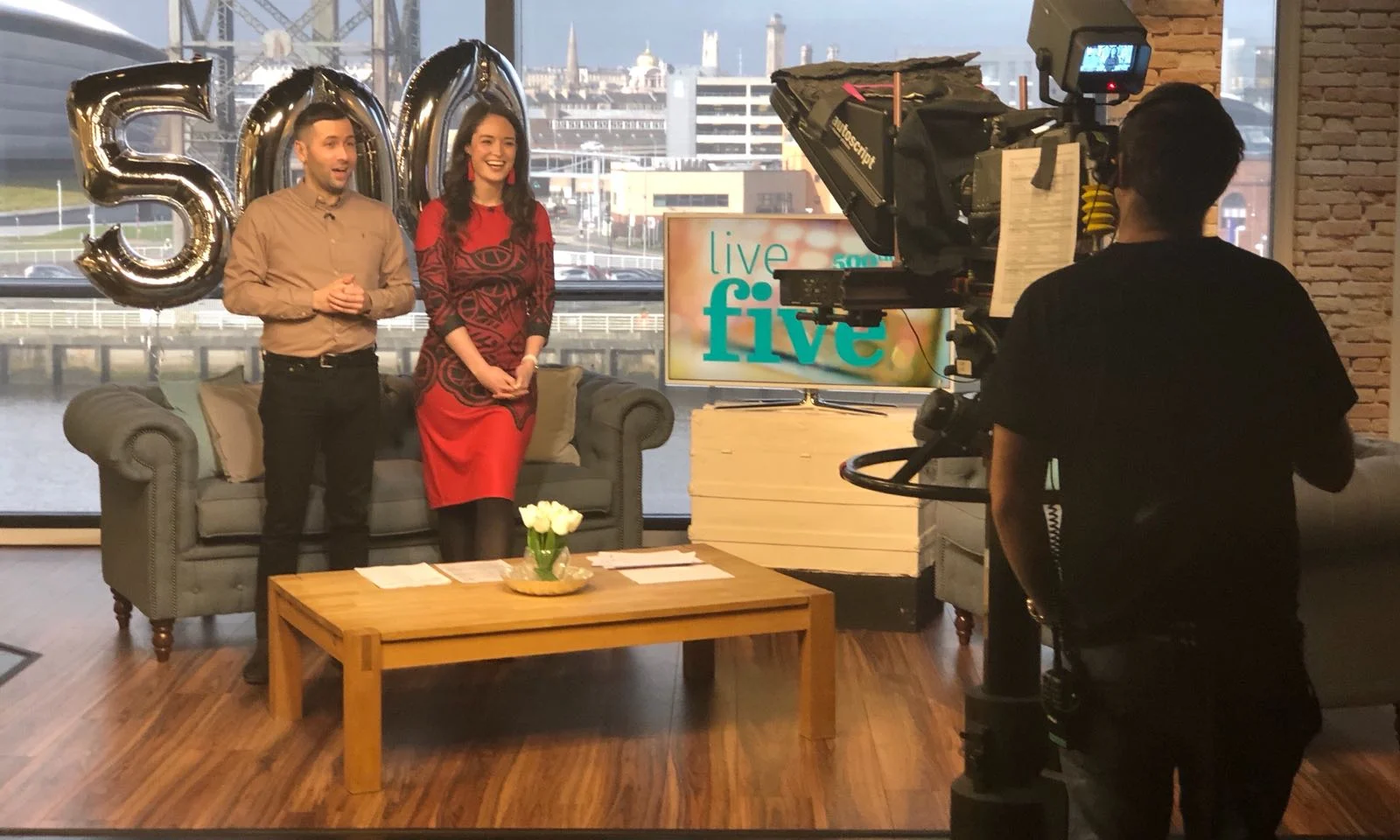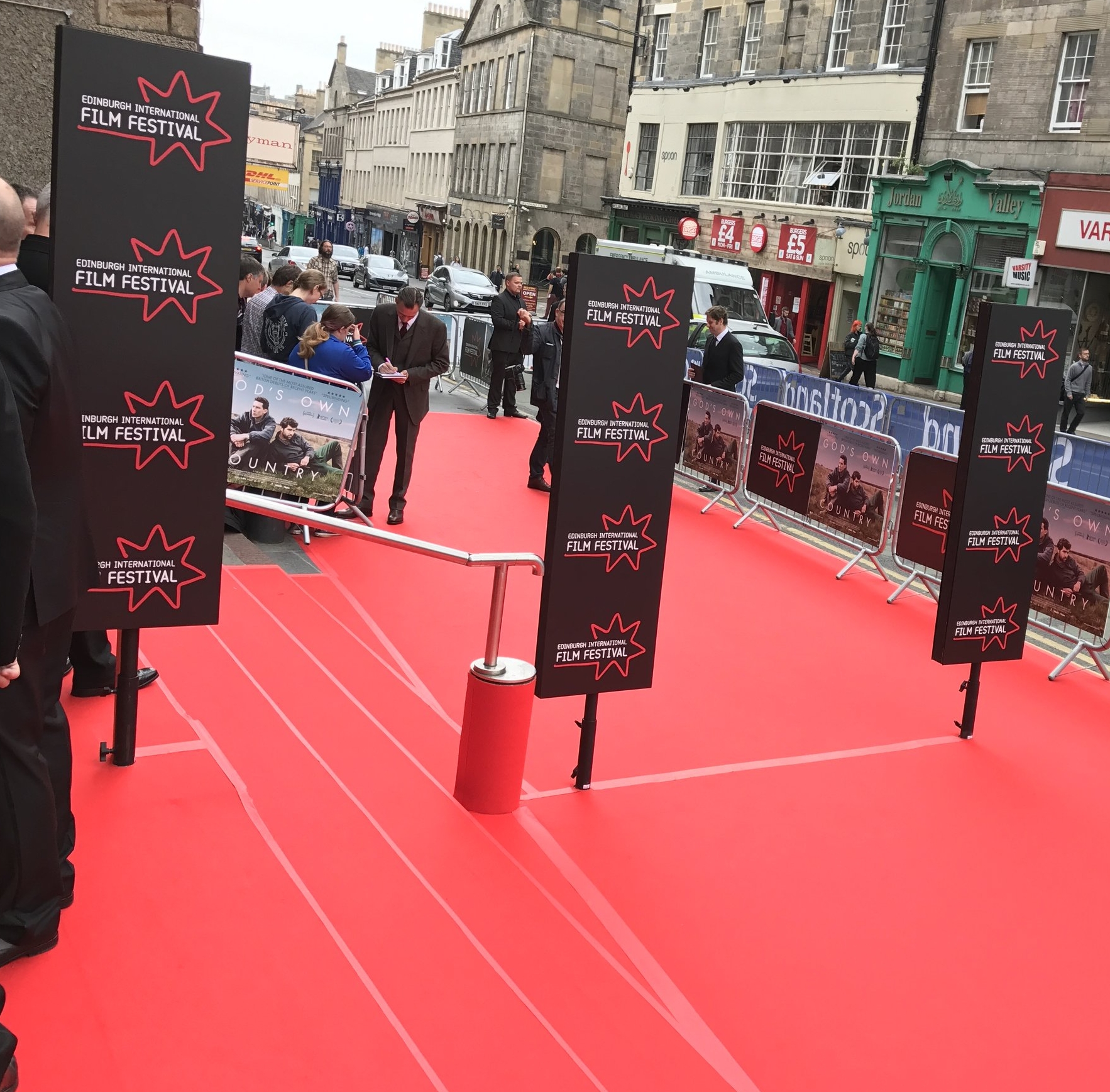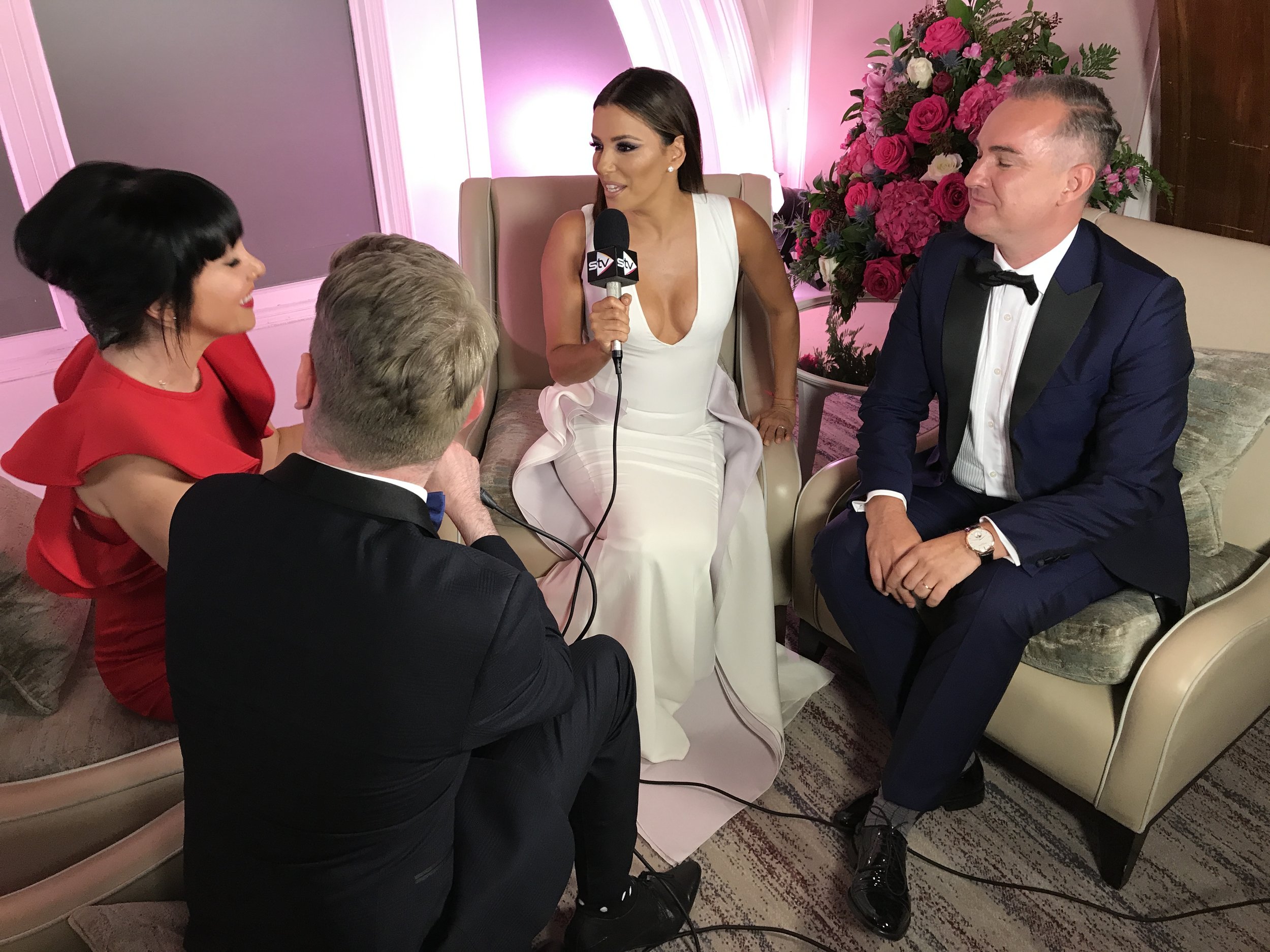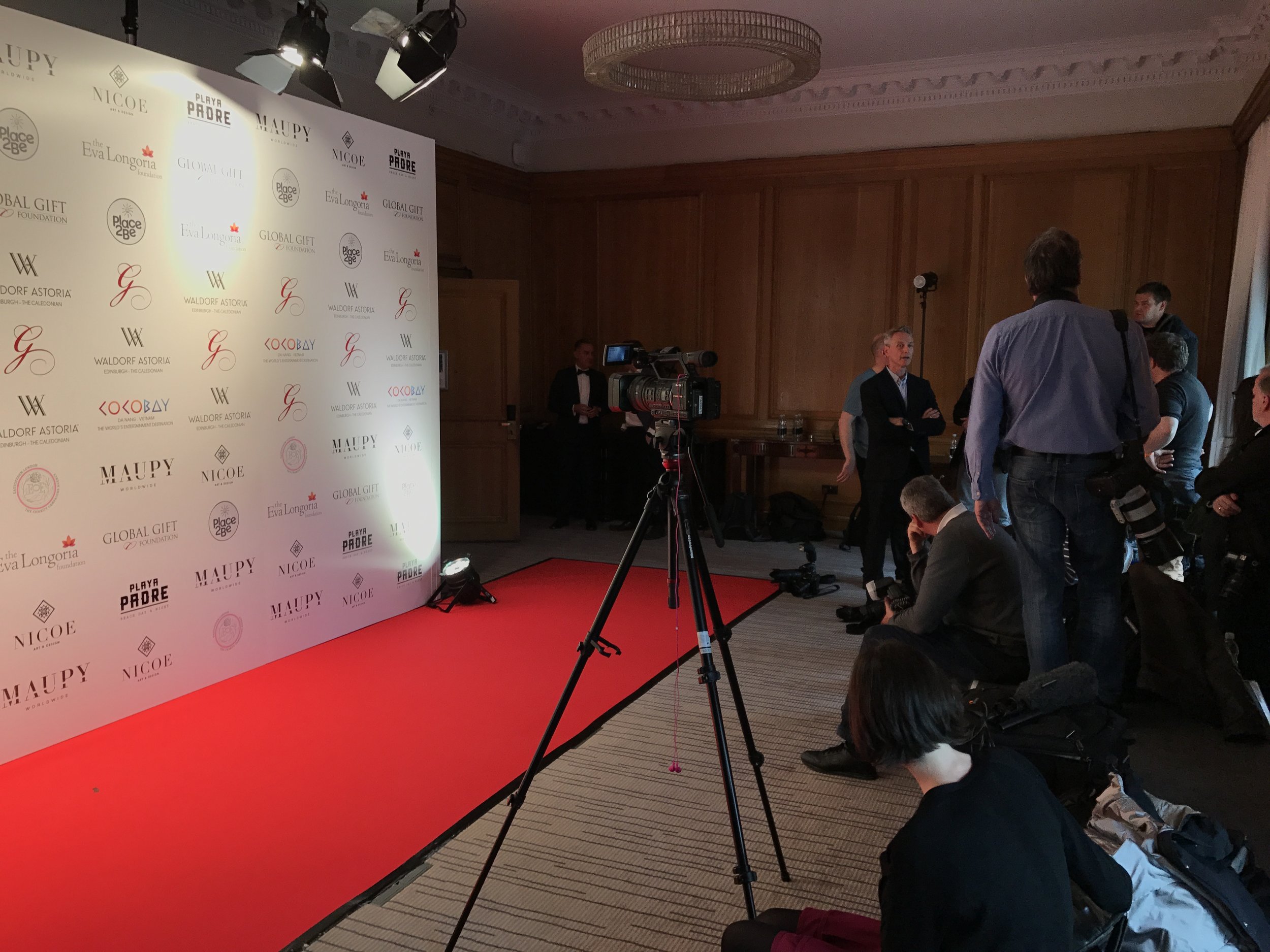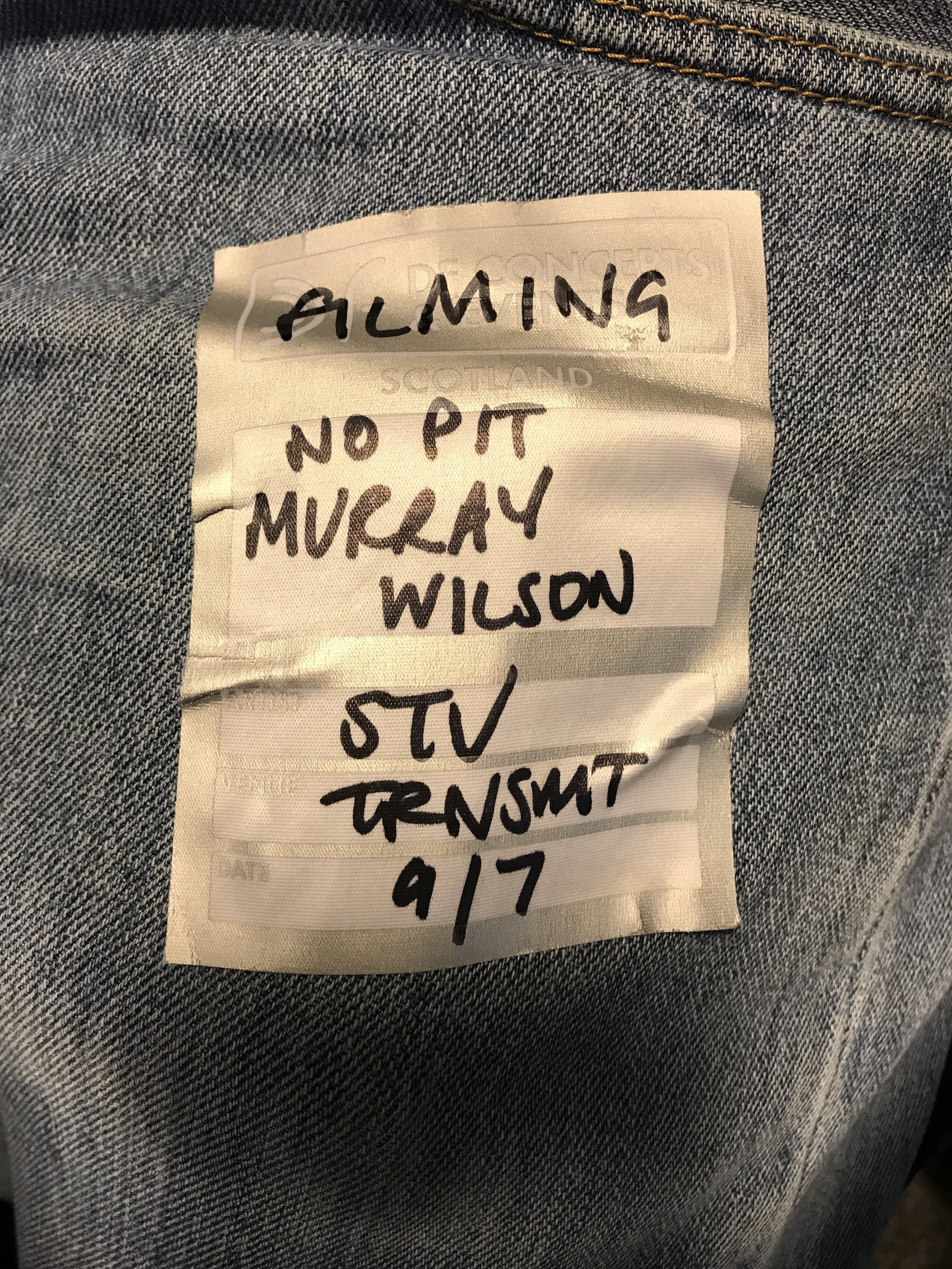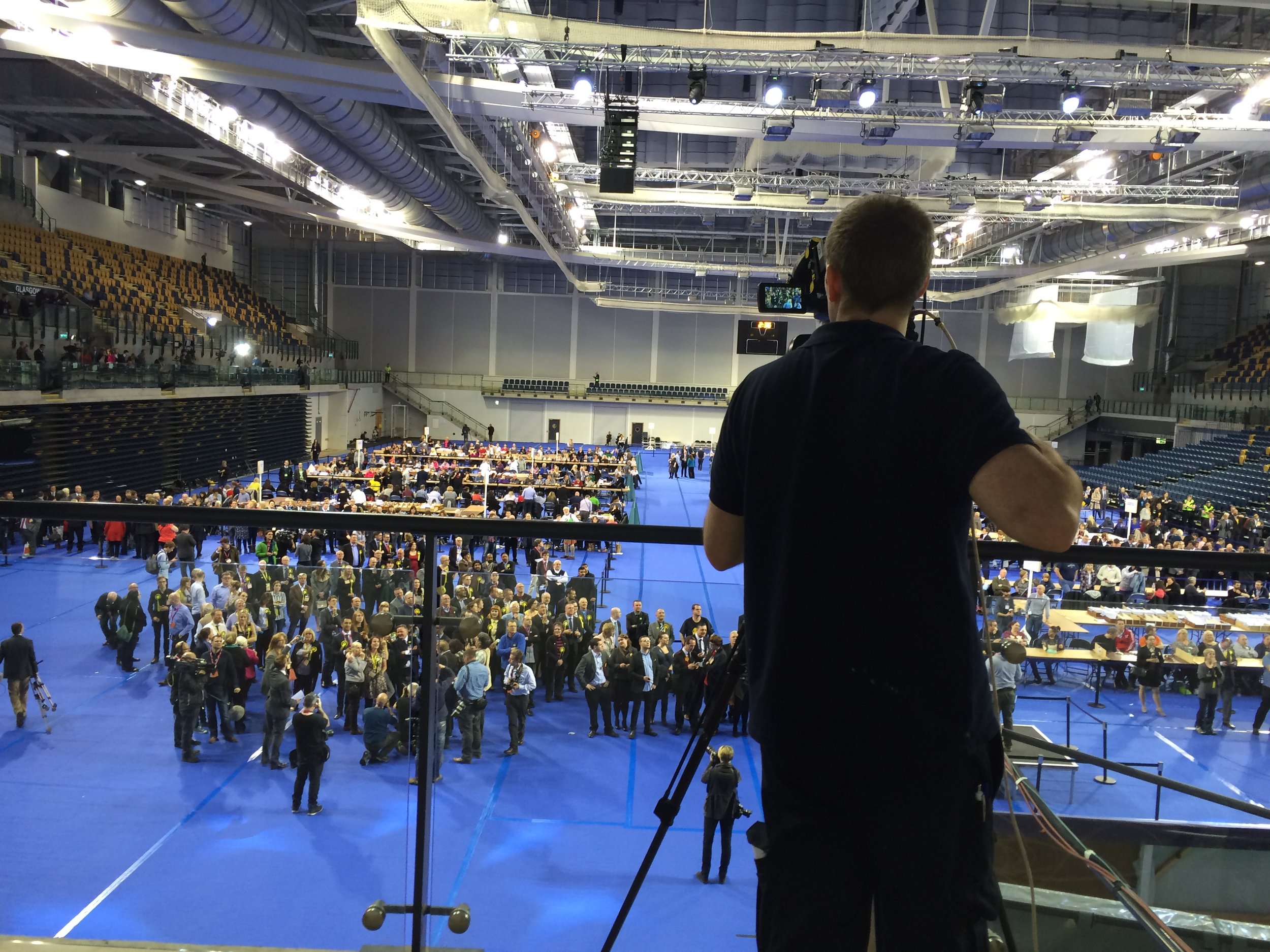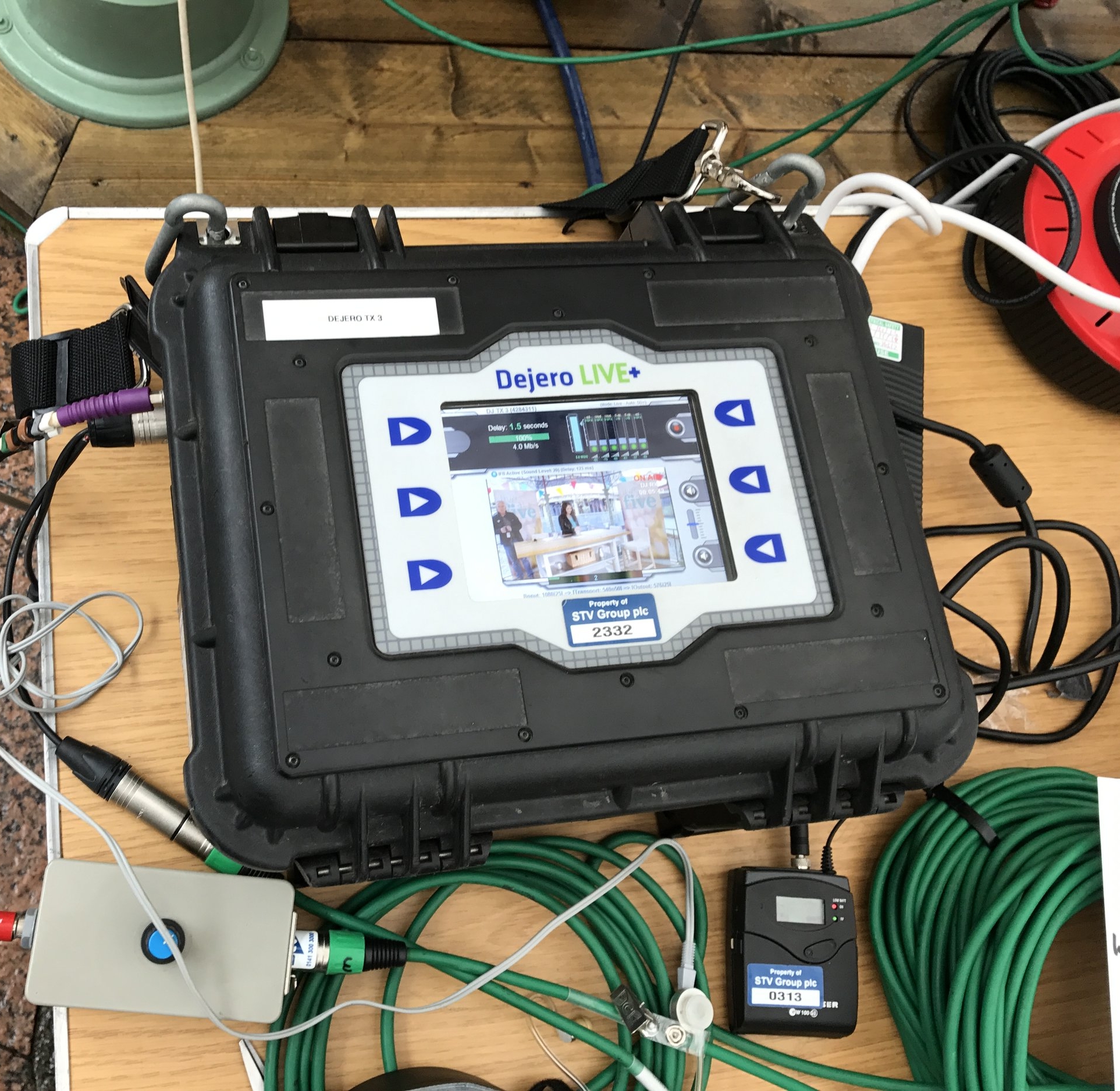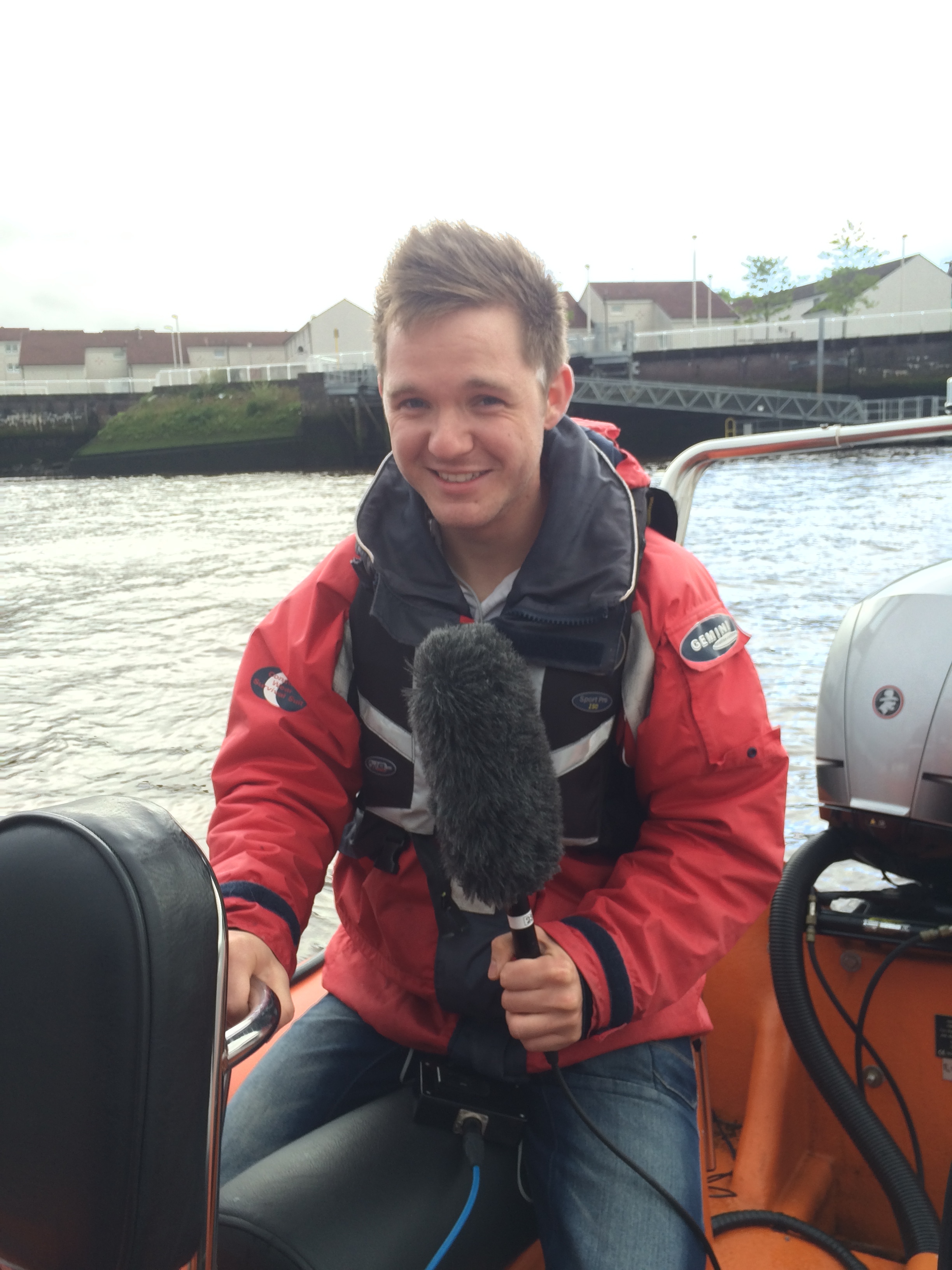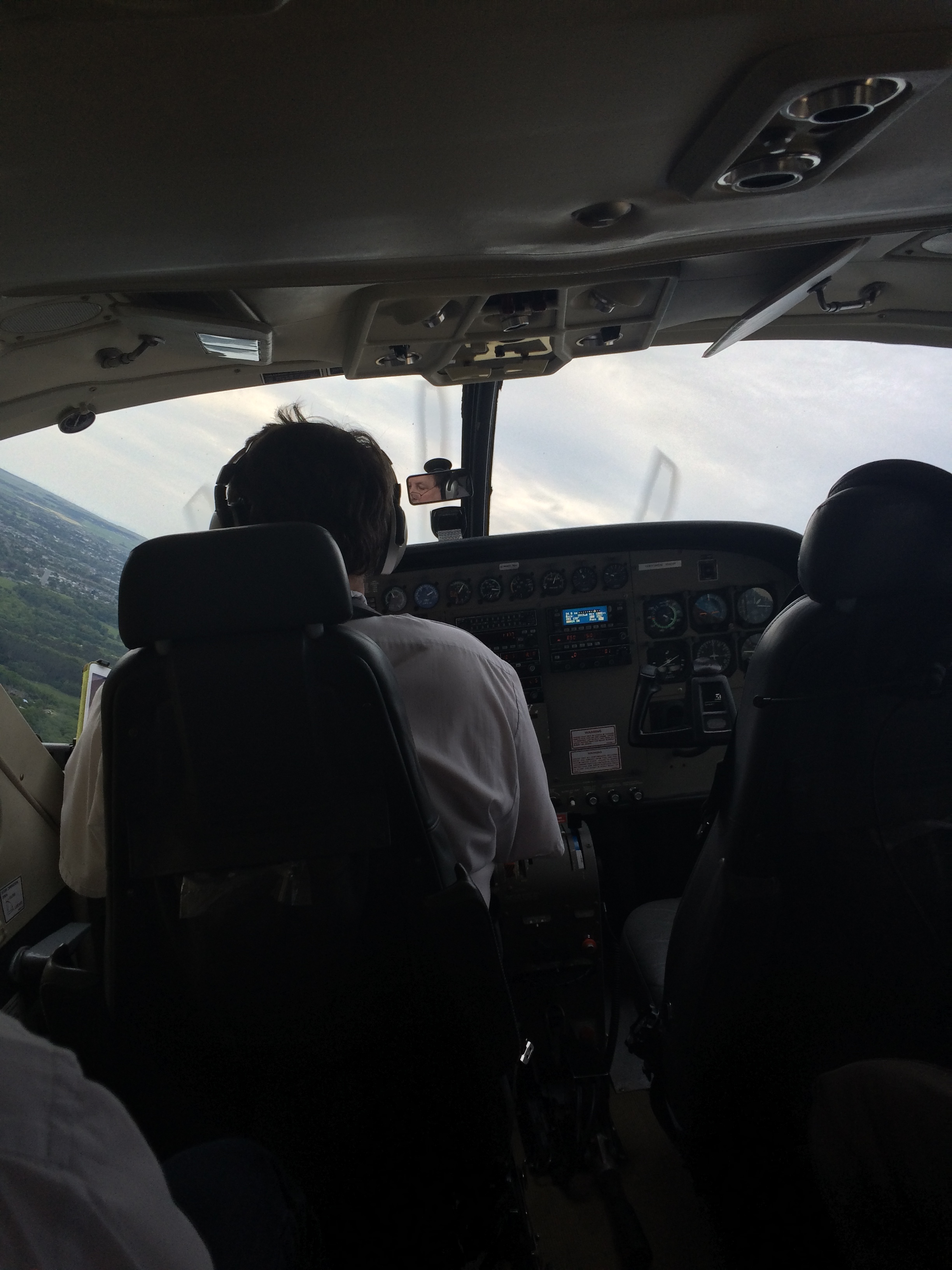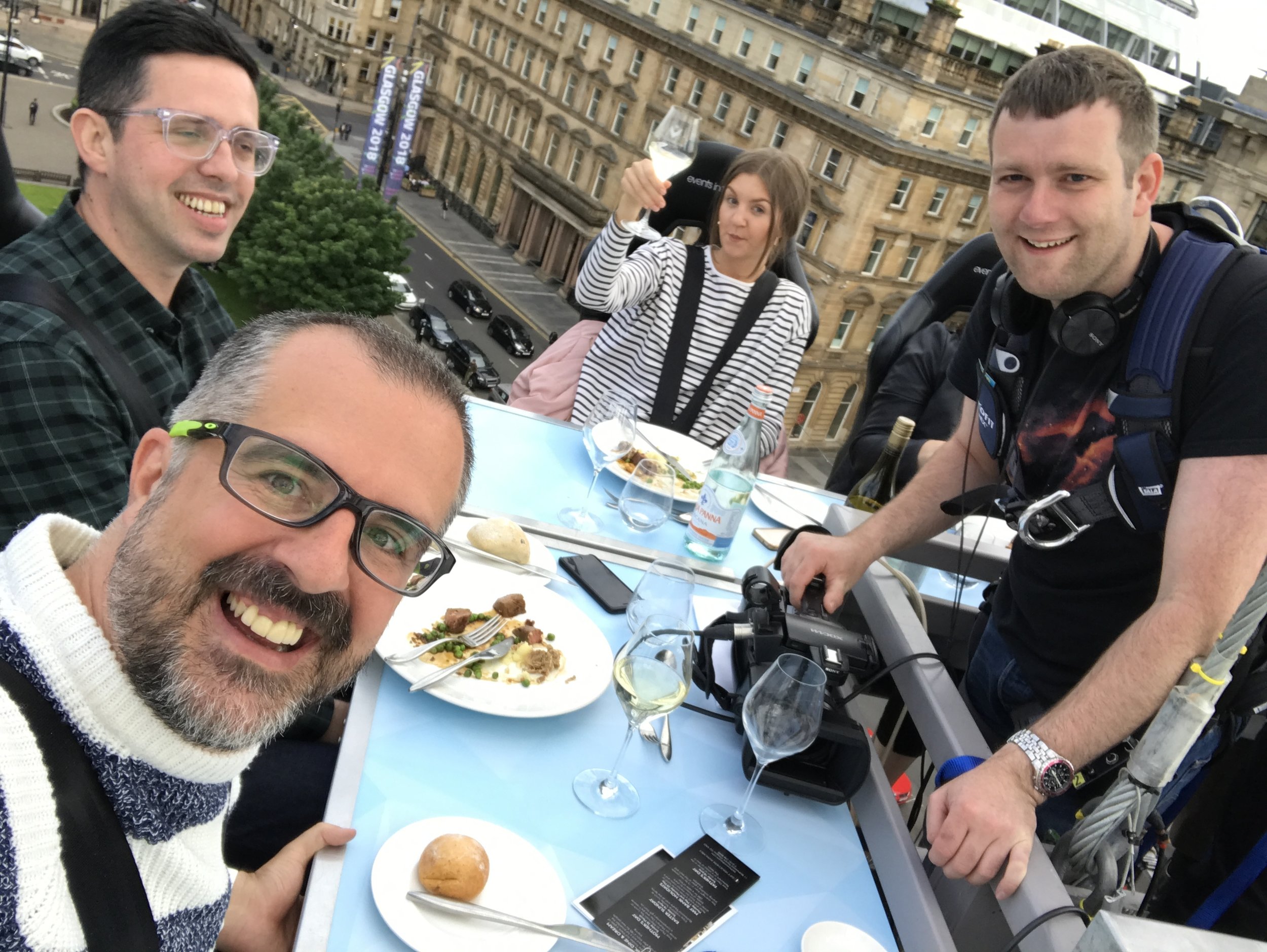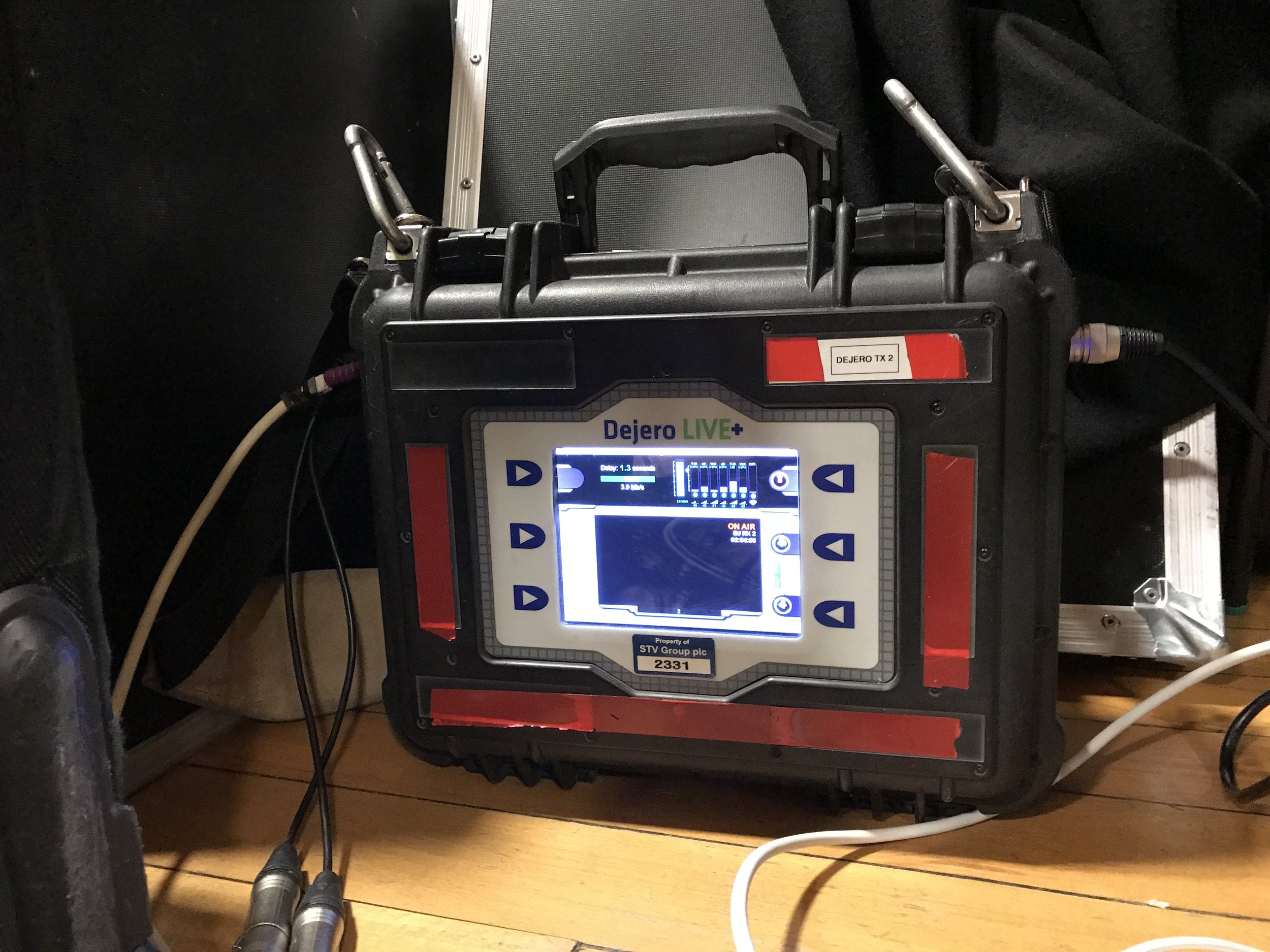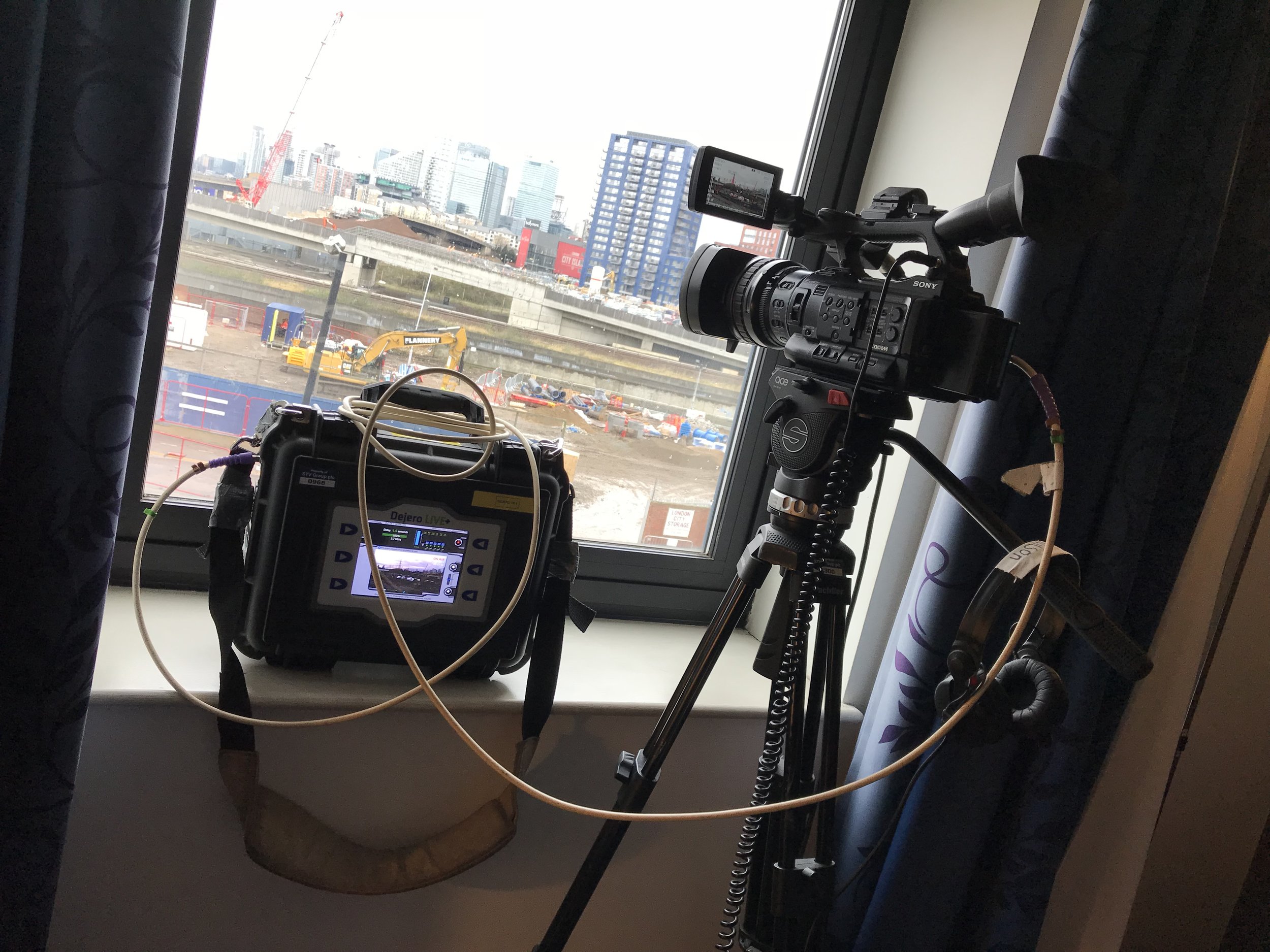I’ve worked a lot of red carpet events in my career, some have been good and some have been bad.
The vast majority of them, I’ve worked with one reporter who has become one of my favourite people.
An intelligent, funny, fun and hard working woman by the name of Laura Boyd.
Laura has an interesting story herself, but it’s not my place to tell, that’s down to her, so if you’re interested head over to her site;
https://www.forthelofit.com/
Laura and Myself, just before an event
I explained in one of my previous blogs;
https://www.mwilsonmedia.co.uk/blog/livetelevision
That when I’ve been on location it’s generally been myself and a reporter.
So in these instances, Laura has assumed the role of reporter and producer, which she is very good at.
She can chat and blag with the best of them, so purely down to her we’ve ended up with some excellent and exclusive interviews, not to mention last minute access to restricted areas that would normally require months of interaction and negotiation with PR agents.
Together we’ve interviewed actors, comedians and musicians, covered red carpet events, awards ceremonies and got some of the biggest names in film, television and music to give us great sound bites that have proved massively popular on social media and in the press (don’t ask about the time we interviewed One Direction though, we don’t talk about that…).
The highlight for the past few years has been going down to London to get on the red carpet for the National Television awards.
An Easyjet flight in the early morning, two trains, a ride on the underground then a 10 minute walk to the hotel whilst carrying a camera, Dejero, tripod, assorted cables and batteries, as well as our own clothes will definitely burst the bubble of anyone that thinks that working in this industry is glamorous.
Fortunately we then get a couple hours of rest in our rooms before meeting for a quick dinner, then heading back to the hotel to change before heading over to where the ceremony was held, which is the London O2.
Once we’ve arrived we head to the accreditation desk where they issue us with our passes and then it’s a bit of a wait before, as a group, the crews from various TV and online outlets are shepherded out to the red carpet area.
The area where we stand and form a long line is generally pretty tight.
It’s usually about 10ft wide and we’re crammed together, so not much room for people, cameras and cables, but we all know the script and have to make it work.
On the carpet, ready to go
I always take a tripod with me, but I generally fold the legs together so I can use it as an impromptu monopod. It offers a bit of flexibility and means that if I have to get something from a bag, I don’t have to put the camera on the ground where it could be stood on and damaged.
I’ve found a sense of solidarity descends over us all as we stand there waiting for the various celebrities to arrive.
We’re all there for the same thing and because you’re in such close quarters you quickly get chatting to the crews on either side of you, forming bonds, looking out for each other and generally trying to be as helpful as we can be for the others sake.
Simple things like pointing out an interview for them that they might not have noticed, passing a battery up to them if they can’t quite reach it and placing a hand on their shoulder to steady them in case they’re in danger of falling over. These things are all reciprocated, which makes for an easier few hours.
It’s very refreshing as a lot of the time you have to have pointy elbows and be quite forceful in a media scrum.
There’s always a dress code as well which is fine for me. The downside is that this particular award ceremony is held in January.
I’ll wear a suit meaning I can have long sleeves and layer up, but poor Laura is standing there in heels and a dress freezing. I usually take an extra fleece with me so she can throw it over her shoulders in between interviews, for a brief respite from the cold.
I’m a gentleman, I know.
She’s a trooper though and tries to ignore the cold and get on with the job at hand.
A Media scrum in full flow
When the celebrities start to arrive Laura will be liaising with the various floor runners that are there to lead the celebs to us, negotiate with other reporters about the order they’d like to do interviews, chat to the PR reps of the people she wants to talk to, do a few pieces to camera, conduct the interviews and generally push her luck a wee bit.
It’s a dance that the PR reps and reporters have all done before, you push your luck for access, the time you’re allowed with someone, the questions you can ask, how many questions you can ask etc.
As long as you’re nice about it and don’t cross any lines, the PR will generally do their best to accommodate you, and because Laura knows them all and they know her, she’s successful more often than not.
I also think the Scottish accent helps. It seems to disarm people a little bit for some reason and they relax.
When the last potential interview has left the red carpet, we head back inside for a quick break and to warm up.
Most other people will head to a press room where, as one big group, they get the chance to ask questions to the winners and losers of the evening.
The tiny wee room we make our way to
Due to Laura’s excellent people skills and her relationship with the organisers, we get to go to a much smaller room, which the winners are taken to as soon as they step off stage.
In this room there are 2 or 3 other crews, which means we all get one on one time for interviews which gives us the opportunity to get an exclusive sound bite.
The crew solidarity is even more on show here, we’ll share lights, batteries if people are running low, information about interviewees if someone doesn’t know who they are and generally chat to each other all night.
This room also means we can get the reporter into our shots.
On the red carpet the most we can usually get is an over the shoulder shot or their hand holding the microphone, but because this winners room offers us more space the reporter can get in front of the camera properly so we can see they are actually there conducting an interview.
It may seem like a small distinction, but it really helps give the interview context to the viewer at home and allows for more flexibility if it has to be edited later due to time constraints.
And the final bonus of this room is that the winners are high on adrenaline or slightly tipsy, so they are a bit looser and relaxed.
Everybody in these circumstances are great interviews because they’ve just won an award and are excited.
We’ve got some amazing names that everyone knows and some very high profile celebrities during these stints.
But for me, and I feel confident in saying for Laura too, the highlight has to have been when we got an interview with Sir David Attenborough.
The people who are in charge of the running of this room have walkie talkies and headsets on and they inform us of who is next into the room, and will ask who wants them, so they can keep it moving smoothly.
It’ll usually go something like “Hey guys, *Insert name of winner here* is coming in in 5 minutes, who wants time with them?”.
If you want them you say so, if you don’t you kindly decline.
When it was announced that Sir David Attenborough was available for an interview and the woman in charge asked us if we wanted a slot with him, there was a ripple of excitement through the room.
Everybody stood up, double checked batteries, put in a fresh memory card and made sure they were good to go, this was an interview none of us wanted to mess up.
Laura doing her best to play it cool
A few moments later he arrived and after introducing himself to us all, he approached the first crew in line and began his interview.
We were next up and he did not disappoint.
I am pleased to say he was just as polite and pleasant in person as he comes across on television.
He would listen intently to each question, pause for a moment to consider his answer and then reply in that classic voice we have all grown up with.
His PR rep tried to hurry him along on more than one occasion but he would make sure that he answered the question in full and afterwards thank us before moving onto the next crew.
What a gent.
He was one of our last interviews of the day and so after packing up the kit it was party time at one of those secret media parties you’ve no doubt seen in films and read about in magazines.
The things I’ve saw and heard at these things…. Laura is always saying to me “What happens in London, stays in London!”.
Or more realistically it was time to head back to the hotel at the end of what is usually a 14 - 16 hour day.
Tired, hungry and looking forward to having a shower, the only place either of us wants to go is to our beds.
I’d be lying if I said we didn’t head to the hotel bar for a quick drink, so we could unwind for a few minutes.
I reckon we’d earned it.
- M
